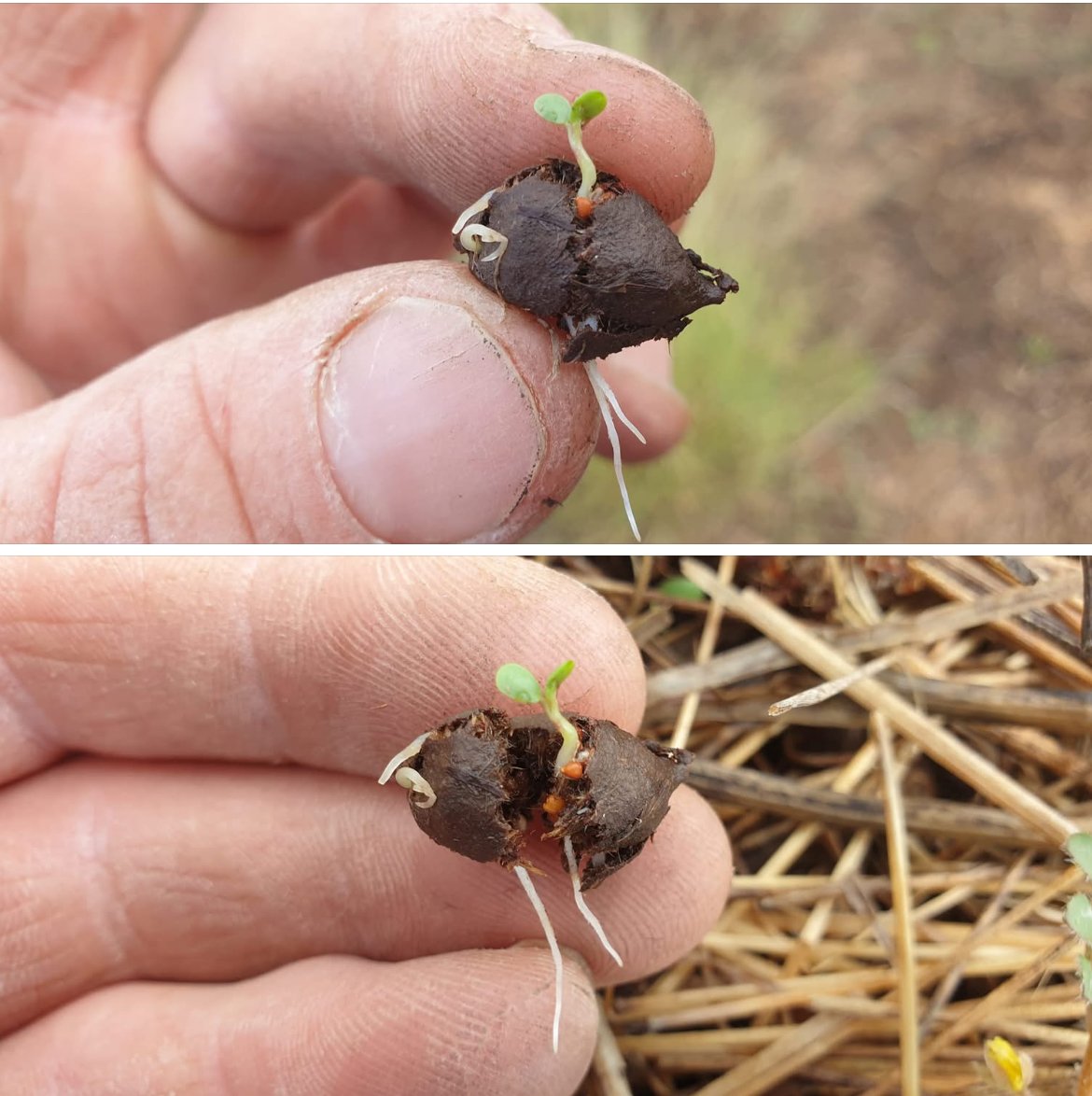Ruminating Magic: Harnessing Livestock to Manage Plant Species and Restore Landscapes
By Madison Throop
Across the globe, holistic livestock management has demonstrated remarkable potential in regenerating degraded landscapes. Figures like Alejandro Carillo in Chihuahua, Mexico, and Allan Savory in Africa have shown how strategic grazing practices can restore soil health, promote biodiversity, and combat desertification. These stories highlight the transformative power of ruminants when managed with care and intention.
In the Western United States, this potential is being harnessed to address invasive species like cheatgrass (Bromus tectorum). Known for its aggressive growth and ability to outcompete native plants, cheatgrass also poses a serious fire risk due to its early-season drying and high fuel loads. While traditional control methods often fall short, innovative approaches using grazing livestock are proving effective not only in managing cheatgrass but also in seeding native and beneficial plants into the landscape.
A recent study published in ScienceDirect revealed that ruminants can reduce the viability of cheatgrass seeds, which is key in mitigating the spread of this invasive species. The study focused on the ruminal incubation of cheatgrass seeds, showing that the longer the seeds remained in the rumen, the less likely they were to germinate. After just 36 hours in the rumen, nearly all the seeds lost their ability to germinate. This indicates that grazing can help reduce the cheatgrass seed bank, especially if ruminants graze strategically during vulnerable times.
In particular, fall-collected cheatgrass seeds exhibited a delayed response to microbial degradation, meaning they remained viable for a longer period than spring-collected seeds. This finding suggests that grazing in the fall, when seeds are most vulnerable, can significantly decrease cheatgrass seed viability and prevent its spread across landscapes.
In addition to controlling invasive species like cheatgrass, ruminants can help regenerate native pastures. Rancher Graeme Finn, in an article from BeefResearch.ca, uses a strategy of feeding legume seeds, such as sainfoin and alfalfa, to his cattle throughout the year. The seeds are mixed with the cattle’s mineral supplements, which helps distribute them across pastures naturally as the cattle graze. Finn has observed significant success with this strategy, noting that legumes like sainfoin have begun to appear in pastures where they had not been planted mechanically. “Last year, I went out with the quad to spray some thistle and toadflax in one bush area and I had to quit,” says Finn. “There was so much sainfoin coming in among the grass I stopped because I didn’t want to spray it out.” This natural distribution method is particularly effective in areas where mechanical seeding would be impractical or impossible.
Finn’s approach relies on feeding raw, untreated seed to cattle, ensuring that the seeds maintain their viability after passing through the animals’ digestive systems. This system provides a low-cost, sustainable method of renewing pastures over time. While this is a slow process, it’s an effective way to gradually spread beneficial plants and encourage the regeneration of degraded land.
Research also supports Finn’s approach. Studies show that hard seeds like those of sainfoin and other legumes can pass through the rumen and establish themselves in pastures. “Planning to have cattle distribute seed is part of a well-managed grazing system,” says Finn’s collaborator, Lastikwa. By incorporating seed distribution into a grazing plan, land managers can increase plant diversity and soil health over time without relying on expensive or damaging practices like tilling or chemical treatments.
The benefits of these grazing strategies extend beyond just weed control. By strategically managing grazing periods and timing, land managers can restore plant communities and improve soil health. Cattle can help manage grasses like cheatgrass, while sheep and goats are particularly effective at controlling broadleaf weeds and invasive shrubs. This integrated approach fosters more diverse and resilient plant communities, benefiting both the land and the livestock.
Ruminants are far more than just livestock; they are ecological stewards capable of driving lasting environmental change. From reducing the viability of cheatgrass seeds through ruminal digestion to naturally seeding landscapes with legumes like sainfoin, livestock play an integral role in restoring degraded ecosystems.
As the ScienceDirect study demonstrates, strategic grazing can drastically reduce invasive seed banks, particularly when timed to coincide with the vulnerability of species like cheatgrass. Meanwhile, innovative practices such as those employed by rancher Graeme Finn highlight how cattle can help regenerate pastures by spreading beneficial seeds in areas where mechanical seeding isn’t feasible.
With thoughtful management, these practices pave the way for healthier, more resilient landscapes. Ruminants, when treated as partners in land stewardship, truly embody a form of "ruminating magic," turning challenges like invasive species and soil degradation into opportunities for renewal and growth. This hopeful approach invites land managers, ranchers, and conservationists to harness the power of livestock to create thriving ecosystems for generations to come.
References
- ScienceDirect. (2024). "In situ ruminal incubation of cheatgrass seeds: Effects on seed germination." ScienceDirect. Retrieved from [https://www.sciencedirect.com/science/article/pii/S0190052824000269](https://www.sciencedirect.com/science/article/pii/S0190052824000269)
- BeefResearch.ca. (2024). "Let Cattle Do the Seeding." Beef Research. Retrieved from [https://www.beefresearch.ca/blog/let-cattle-do-the-seeding/](https://www.beefresearch.ca/blog/let-cattle-do-the-seeding/)
Madison Throop

